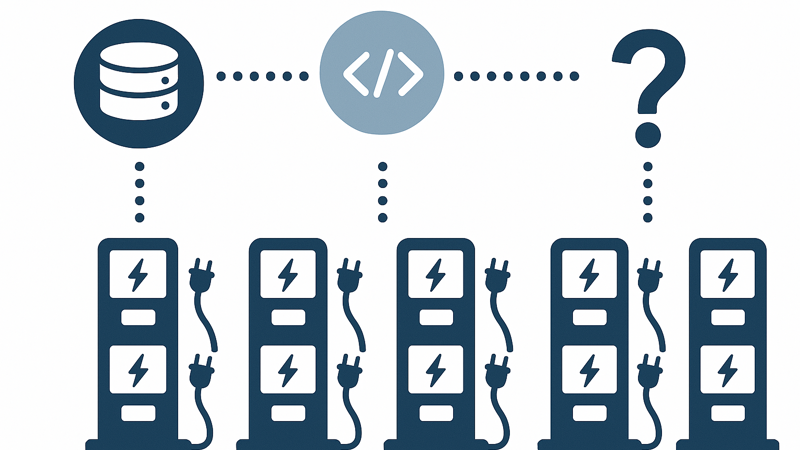
EV Charging: Your FAQs Answered
We get it. It can be difficult to figure out what exactly is going wrong when a chargepoint isn’t working as expected. When using different apps with different rules at different chargepoints, a charging error can be an extra headache.
Our job is to make it easier.
At Clenergy EV, we take a software-first approach to understanding EV charging. We want to make the entire EV charging cycle fair and easy to use for all, and are approaching 100,000 users who can vouch for that.
So how does Clenergy EV work to make your EV charging experience easier and better across our network? How do EV charging stations work?
In this article, we run through some of the most common issues we get from users, breaking down when and how we can help, while looking to clear up some misconceptions about our service along the way.
FAQs - Suggestions For Your Most Common Charging Issues
‘I can’t start a charge’
A step-by-step video guide on how to use a chargepoint is available here. All you need to do is plug in your car, enter your charger ID on our app, select the right connector to initiate the charge, and plug in.
Tip: A common error is to connect the charging cable to the chargepoint before going through the app. This can stop the charger from working properly as it believes there’s already a charge ongoing.
‘Why can’t I remove my cable?’
Some chargers have a system that auto-locks cables if not removed for 30 minutes after a charge has ended. In instances where this window has surpassed, you can unlock the charging cables again using the Clenergy EV app.
Limits like these are put in place by chargepoint operators and manufacturers, but sometimes it can be a fault with the charger itself.
You can always ring our 24/7 helpdesk if you are still having issues with a cable locked into a Clenergy EV charge point.
‘Why is my charge taking so long?’
We often get calls from customers wondering why the 22kWh chargepoint they’re using is only charging at 11kWh.
There are a few reasons why this might happen.
The national grid has a set amount of electricity it can give out from a single point without shorting. In order to stop this, our systems have a built-in load balancing system that spreads the power evenly across available outlets. This means 22kWh chargers can be left with, for example, 7kWh to charge once the load is spread. It may seem frustrating, but without our software facilitating the spread of this load, you’d be left with outages.
Another reason for a slower charge is vehicle limitations. Some hybrid vehicles have batteries that are only able to charge at a maximum power of 3.5kWh. That means that even if 22kWh is available from the charger, it will only ever charge at that 3.5kWh rate. This would be the same for full EVs, which can often have higher limitations of up to 11kWh.
Always make sure to check your vehicle’s max charging power when encountering this issue.
Finally, another reason why a charge might appear slower than expected is in-built vehicle buffers. Some vehicles slow down charges at 80%, 90%, etc. charge to make sure the battery is protected. During long top-ups such as when charging overnight, the battery can continue to charge after reaching full capacity. This damages the battery, and so features like this are built-in by manufacturers to protect their users.
‘I go to use the Clenergy EV app and just see a spinning green circle. Is the app down?’
In short, it’s mobile signal.
Our app is able to handle 100x the expected user traffic without going dark, so when you see this green circle, it’s likely you’re in an area with low signal and are unfortunately unable to load the app properly.
To combat this, we offer free RFID cards upon request for our users who want to bypass the impact of signal issues and charge easily on the go.
‘Why do I have to pay a £30 pre-authorisation fee with Clenergy EV? Is there any way around this?’
Don’t worry. As soon as your charge is finished, we refund whatever amount wasn’t spent in that session. If you charge for £7 worth of electricity, you’ll receive £23 back in your bank account. It may not appear instantly, depending on the processing times of your bank, but the pre-authorisation payment is in place as we are unable to request the transaction fee until after the charge has been completed.
But there’s a way around this too if you’re not happy with the pre-authorisation system.
You can either choose to add credit to your account if you’re planning on continued usage of chargers across our network, or you can once again make use of our free RFID cards. These allow you to tap and go at supported chargepoints, and get charging.
Explaining Misconceptions
Misconception 1: We're responsible for maintaining chargepoints

No one likes it when chargers are offline.
That's why we work with chargepoint operators on our network to ensure they’re notified as soon as sites go dark. Our software reports the precise error code that causes chargers to down, making life much easier for the maintenance team in charge of its upkeep and allowing for quick repairs.
Ultimately, however, maintenance comes down to operators on our network, rather than Clenergy EV as a software provider.
Our labels are often attached to chargers using our software to provide users with access to our 24/7 helpline should they need it, so we understand where the confusion comes from.
When it comes to offline chargers, all we can do is report and inform. With that in mind, please do inform us if you see a charger that isn’t working - we’re always working with operators to make sure they’re back up and running as quickly as possible.
In fact, we think our live reporting and self-diagnostic features are prime examples of why software is a must when looking at EV charging. Without it, you wouldn’t know when and why chargers are down. That means longer response times, and more experiences like this on your network.
Misconception 2: we want to know everything!


